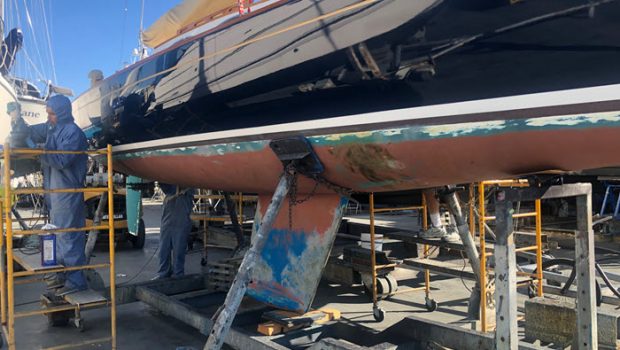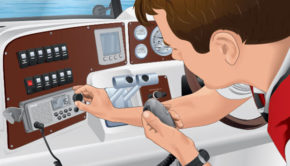Sailing’s big bottom problem
Published on July 27th, 2022
During a recent San Diego beer can race, a caller on the VHF radio reported how their team was dropping out of the race. It turns out the boat bottom recently got painted with an environmentally-friendly brand of coating which needs weekly diving, and as that hadn’t happened, the excessive growth had dragged them to the back of the fleet.
That doesn’t sound like much progress, and in this report by Bill Schanen for Sailing magazine, he gets to the bottom of sailing’s big problem:
It is a bond that has linked sailors from time immemorial, bringing us joy and sorrow, triumph and tragedy, marked by hubris and humility, angst and obsession, success and failure, all with egalitarian fairness, treating Phoenician traders in 1000 B.C. much the same as the Russian oligarch whose 465-foot “sailboat” (looks like a warship but has three masts and sails) was seized by Spanish authorities in 2022. The bond is our boat bottoms.
I am well versed in this subject. OK, that’s too humble. Actually, I’m an expert, having possibly spent more hours of my life tending to the bottoms of boats than sailing them.
Sailors love the sea, but the sea is no friend of the parts of their vessels that are immersed in it. The flora and fauna that teem in that liquid environment are relentless in their drive to become obnoxious hitchhikers on our boat bottoms. The best we can do is discourage them. They can’t be stopped.
Even with smooth bottoms, it is hard enough for watercraft that depend for propulsion on a natural phenomenon that is often fickle and unreliable to move through their medium with any semblance of alacrity. Those with bottoms festooned with various plants and animals struggle to move, as though dragging a living anchor, with consequences that range from lost races to lost ships.
The annals of 18th and 19th century seafaring mention vessels laboring with bottoms covered with weeds more than three feet long and Royal Navy ships so handicapped by fouled bottoms they were not able to avoid shipwreck on a lee shore or maneuver to defend themselves from the broadsides of a cleaner-bottomed enemy frigate.
In saltwater, those submerged weed gardens are habitat for creatures that nature seems to have equipped expressly for the malign purpose of becoming part of boat bottoms. Barnacles excrete a glue that cements them to hulls. Microbes paint bottoms with slime that makes a welcoming neighborhood for tubeworms. – Full report









 We’ll keep your information safe.
We’ll keep your information safe.